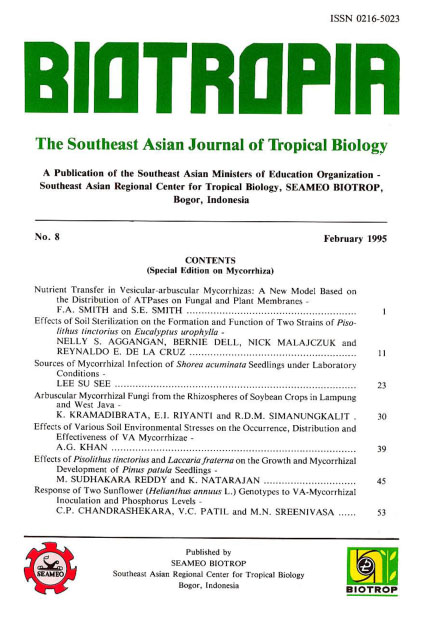
Tags
SOURCES OF MYCORRHIZAL INFECTION OF SHOREA ACUMINATA SEEDLINGS UNDER LABORATORY CONDITIONS*)
Content Language : English

Uninoculated dipterocarp seedlings raised in normal field soil in nurseries were always found to have
mycorrhizas after a few months. This study set out to determine whether dipterocarp seedlings could continue
to grow and develop in the absence of mycorrhizas and also to determine possible sources of mycorrhizal infection
of dipterocarp seedlings raised under laboratory conditions using Shorea acuminata as a typical example.
Seedlings were planted in capped or uncapped perspex boxes containing sterile or non-sterile field soil and
watered daily with sterile water or tap water. Seedling growth and development of mycorrhizas were
monitored at monthly intervals for up to seven months. Seedlings grown in sterile soil remained uninfected after
seven months while infection was found in some of the seedlings grown in normal soil regardless of whether they
had been watered with tap water or sterile water. This showed that field soil (i.e. under grass) far from the forest
contained suitable inoculum for forest tree seedlings. Tap water and the air were not important sources of infection.
However, mycorrhizal infection was very uneven indicating that the inoculum was probably very unevenly
distributed in the soil or that the inoculum density was rather low. Seedlings grown in sterile soil showed better
growth than those grown in normal soil and infection of roots by parasitic fungi in the latter was also
observed.
Link

This work is licensed under a Creative Commons Attribution-NonCommercial-NoDerivatives 4.0 International License.
